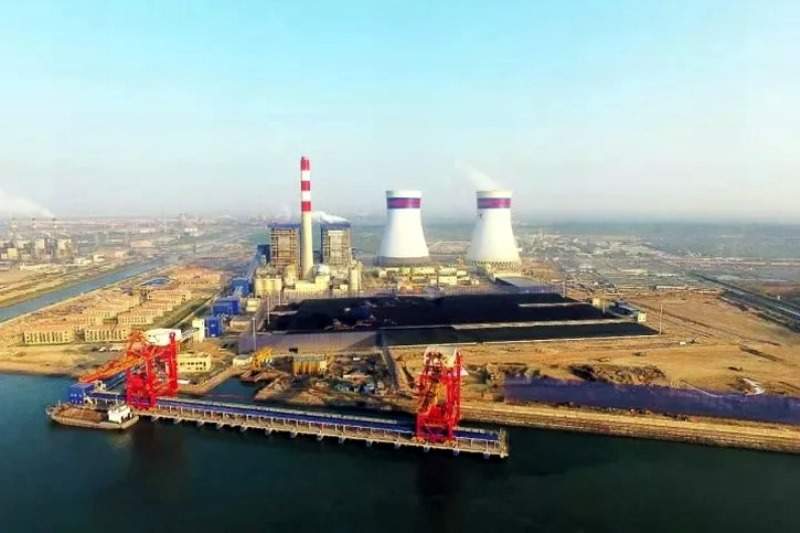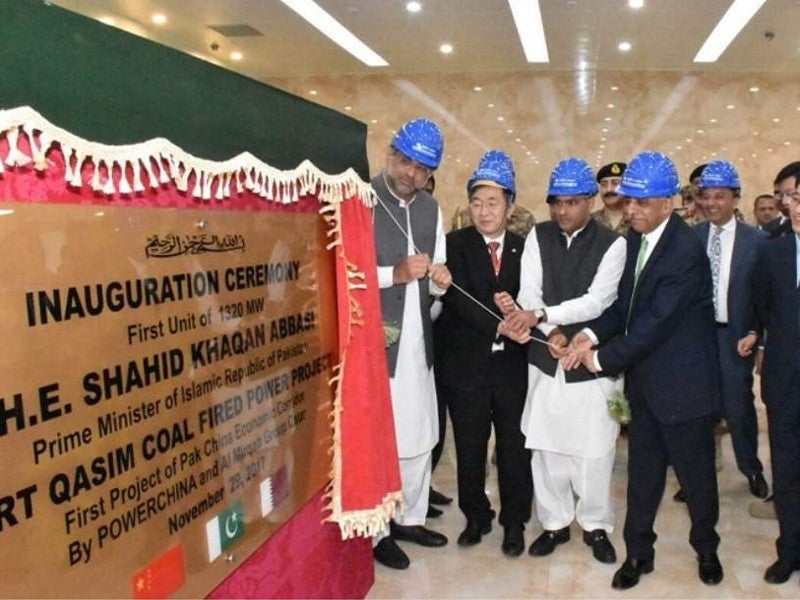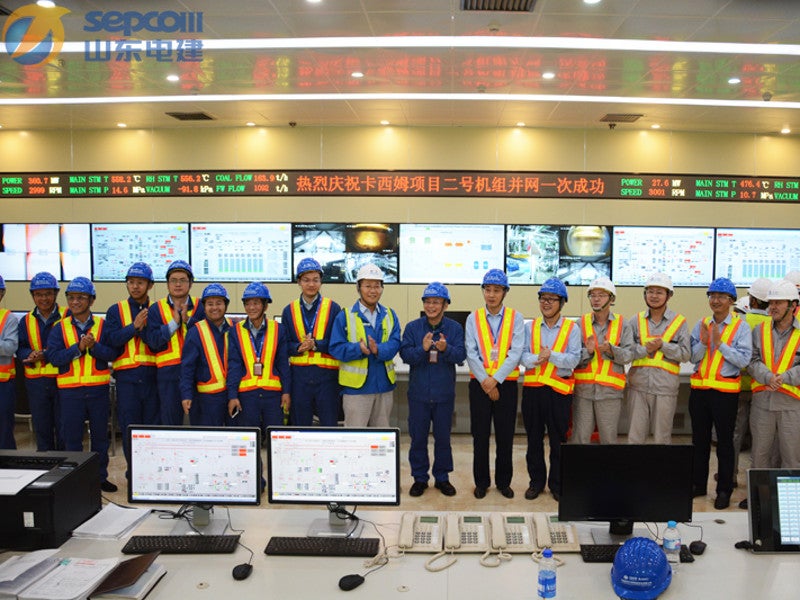The Port Qasim power plant is a 1.32GW (2 x 660MW) supercritical coal-fired plant developed approximately 37km southeast of Karachi, Pakistan, at an estimated cost of $2.085bn.
The plant is operated by Port Qasim Energy Holding, jointly owned by China’s Power Construction Corporation (51%) and Al-Mirqab Group (49%). Both companies individually invested $521m.
The coal power plant is one of the priority energy projects undertaken as part of the China Pakistan Economic Corridor (CPEC) of the Belt and Road Initiative. It is one of the 14 energy projects under the CPEC’s fast-tracked Early Harvest programme.
The groundbreaking ceremony for the project took place in May 2014 and major construction works commenced in May 2015.
The first unit of the project started power generation in November 2017, while the second unit was connected to the grid in January 2018 and commissioned ahead of the schedule in April 2018.
The project created more than 2,000 jobs and generates sufficient power to serve between three and four million households a year.
Port Qasim coal-fired power plant details
The coal power plant consists of two 660MW supercritical units. Each unit includes a boiler, steam turbine and generator. The single reheat, once-through boiler features a regenerative tri-sector rotary type air pre-heater.
The steam turbine is a supercritical, reheat-type turbine capable of operating at a speed of 3,000rpm. The generator operates at a voltage of 22kV and speed of 3,000rpm.
The 285t main transformer is a single-phase oil-immersed and double-winding transformer with forced-directed oil and forced-air cooling system.
The main powerhouse is 167.50m-long and comprises 17 column spacings, as well as an expansion joint. It consists of a turbine house, deaerator bay, bunker bay, boilers and a central control building.
Light fuel is used for the unit start-up, which can be unloaded in Port Qasim and then forwarded to the power plant by road. The start-up and standby power supply of the units are connected by a 500kV bus in the power plant.
Seawater is the source of make-up water for the power plant.
Power generation at Port Qasim plant
The boiler is fuelled by sub-bituminous coal, which is imported by cargo ships from countries such as Indonesia, South Africa, Botswana, and Australia. The coal is unloaded at a dock to be constructed at the plant site.
The supercritical boiler converts the heat energy generated by burning the coal to high-pressure steam, which is discharged to the turbine. The steam drives a steam turbine to generate electrical energy, while the exhaust steam is discharged to the condenser.
Extraction steam from various sections of the turbine is routed to heaters. The generator, which is directly coupled to the turbine shaft, converts the mechanical energy from the turbine to electrical energy.
For 30 years, the electricity generated at the plant will be purchased by the Government of Pakistan at 8.12 cents per unit.
Coal handling system
The coal-fired power plant also includes a jetty and channel, which began construction in August 2015.
Coal unloaded at the jetty is sent to the coal yard in the plant by a belt conveyor. A bucket-wheel stacker-reclaimer is used at the coal yard for coal settling. The coal is then screened and crushed before being fed into the boiler coal bunker.
The plant has an annual coal consumption of approximately 4.66 million tonnes (Mt) to 5.20Mt.
Power transmission from Port Qasim
A 180km-long, 500kV AC transmission line transmits the power generated at the power plant to the Matiari 500kV substation, which further feeds the power to the national grid.
Two-circuit 500kV lines are used for the interconnection.
Ownership and financing
The coal power plant project achieved financial closure in December 2015 with the Export-Import Bank of China (China EXIM Bank) providing a debt facility. EXIM provided $1.56bn required for construction of the plant.
Contractors involved
Harbin Electric supplied the boilers, while Dongfang Electric Corporation (DEC) provided the generators under a contract awarded in May 2015.
Power China engaged SEPCO III Electric Power Construction (SEPCO III) and Hebei Electric Power Design and Research Institute (HBED) for site selection and site survey.
Sinohydro Harbour was awarded the engineering, procurement and construction (EPC) contract for the coal unloading jetty and channel.
Consultant and Construction Supervision, a subsidiary of CCCC Second Harbor Consultants, was awarded the management consulting (supervision) services contract for the coal unloading jetty.






